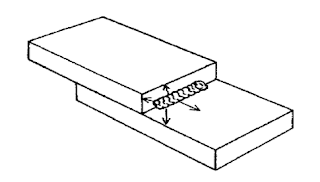Preface
As we know, the intense heat of the arc obstructs the temperature of the metal and reaches the melting point at the bottom of the arc.Distribution of heat.
When the temperature difference is present, the heat starts to move out of the energized zone and heats around the metal. In the welding process, a welder has to use skills to control the heat. While welding, heat enters the puddle which is often controlled by:Welding speed and through weaving or whipping, as described in the same way. The expansion of heat and the rate at which it is excluded, from the weld zone, is dependent on the following factors:
1 - conductance, of work material
2. The mass of the base metal throughout the weld area
3. Available paths for heat conduction
4. the weaving, technique
When compared to other materials, all metals are good conductors of heat. although, all metals are not equal in the
Ability to conduct heat. Such as aluminum is a good conductor
In the heat, metal than stainless steel, the weld area will cool faster than aluminum. In addition, heat will spread throughout the Aluminum plate more quickly. The heat will be extracted faster from lap
Joint than edge joint because the lap joint provides two paths or directions
The flow of heat compared to one direction for the edge joint. Are the way
With which heat can flow to certain weld joints
Factors affecting the distribution of heat in the weld zone:
welding technology
When welding, there are electrodes and arcs.
Sometimes intentionally moves in and out of the molten puddle
Metals, in a similar pattern, to lower the melt temperature
Preheat the metal ahead of the metal and weld.
This technology is called "Whipping:" when the molten metal puddle goes back
And in a similar way forward in the weld joint, in heat
The area close to the weld extends; This technique is called "weaving".
It is used to disperse heat and obtain a broad weld bead
Without retaining an extremely large puddle of molten metal.














0 Comments
Thanks for your valuable time